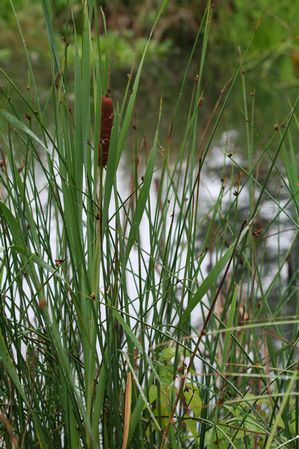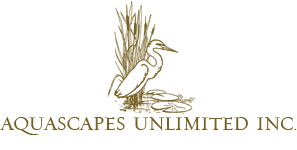
« Previous Plant | Next Plant »
Typha angustifolia
Narrow Leaf Cattails
More About Narrow Leaf Cattails
Typha angustifolia, Narrow Leaf Cattails, are one of the most important native wetland plants, providing wildlife habitat, improving water quality and providing food for wildlife. In fact, Euell Gibbons called Cattails the "Supermarket of the Swamps". Native Americans used Cattail roots to make flour. The immature "tails", when still in their sheath and green, can be boiled and eaten, nibbling the soft outer part away from the stem. The new shoots, when <1' tall can be harvested in the spring. Yellow pollen can be harvested and used for flour after sifting. Consult a wild foods book if you'd like to learn more about preparation of Cattail products. Wildlife thrives in Cattail marshes. Red-Winged Blackbirds, muskrats, turtles, frogs insects and many animals are common in these habitats. Water quality is enhanced as Typha angustifolia absorb many nutrients from water and the colonies of plants can be an important way to trap silt entering waterways. There are several wild and cultivated forms of Cattails. Narrow Leaf Cattails can tolerate deeper water than Broad Leaf.
Bloom Color
BrownTypha angustifolia Characteristics & Attributes
|
Exposure
|
Mature Height
|
Spread Characteristics
|
Season of Interest (Flowering)
|
||||||||||||||||||||||||||||||||||||||||
|
Season of Interest (Foliage)
|
Pond Zonation
|
Foliage Color
|
Wildlife Benefits
|
||||||||||||||||||||||||||||||||||||||||
|
Critter Resistance
|
Wetland Indicator Status
|
Plant Type
|
Attributes
|
||||||||||||||||||||||||||||||||||||||||
|
USDA Hardiness Zone
|
